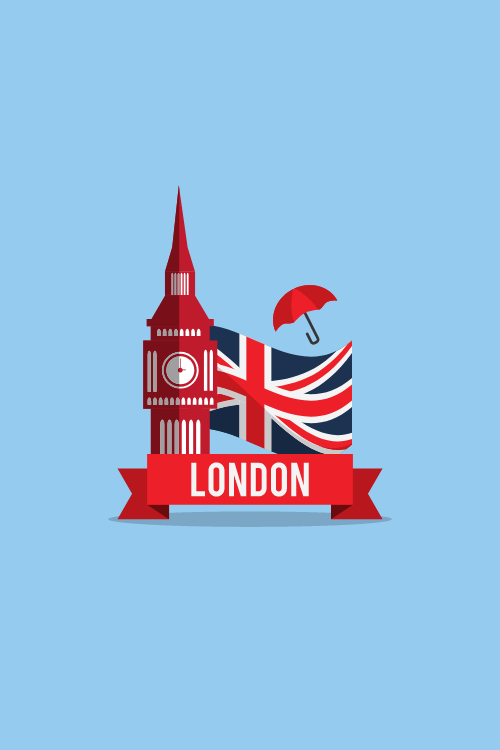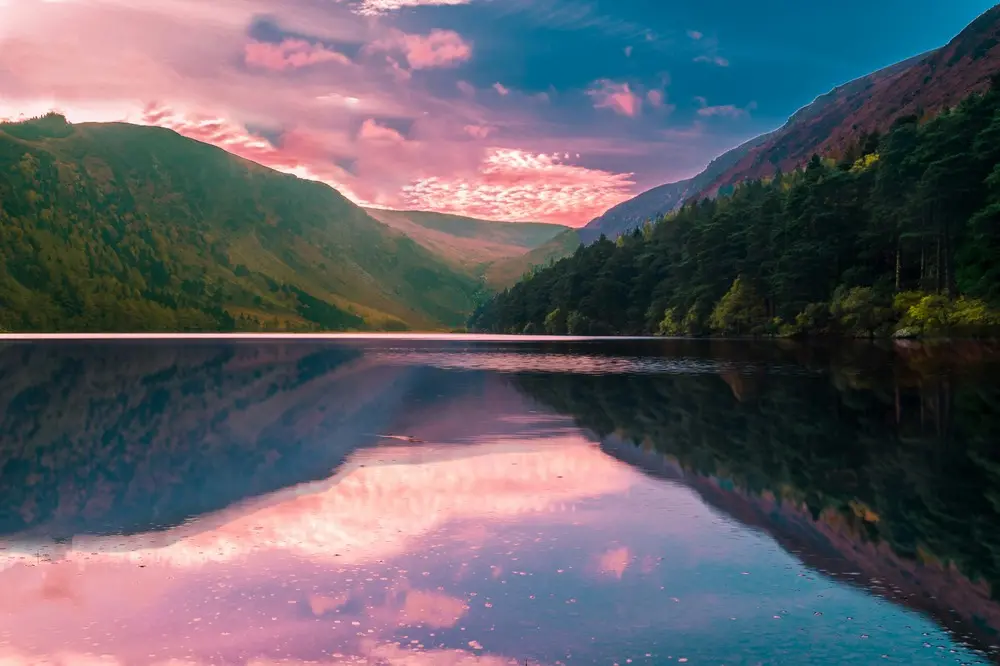Travel
Planning a Trip to Ireland: Ultimate Travel Guide 2024
Imagine yourself in Ireland, standing atop the stunning Cliffs of Moher, feeling the salty breeze on your face as you gaze out over the wild Atlantic.
Or picture yourself sipping a perfectly poured pint of Guinness in a cozy Dublin pub, listening to the lilt of traditional live music.
Ireland is a dream destination for so many, offering a captivating blend of breathtaking scenery, vibrant culture, and warm hospitality.
But planning a trip to this enchanting emerald isle can feel overwhelming, especially if you’re hoping to craft the perfect Ireland itinerary that captures all the must-see sights and authentic experiences.
Where do you even begin? Dublin, Galway, the Ring of Kerry, the Cliffs of Moher, Dingle, Killarney – the options are endless and the decisions can be overwhelming.
In this guide to Ireland, we’ll walk you through every step of planning your adventure, from:
- Choosing the best time of year to visit.
- Crafting a personalized itinerary.
- Insider tips on transportation, accommodations, dining and more.
Whether you’re renting a car to explore Ireland’s scenic countryside or using public transport to hop between charming cities, we’ve got you covered.
By the end of this article, you’ll have all the tools and knowledge you need to plan an unforgettable Ireland trip tailored to your unique interests and travel style.
No more second guessing, no more FOMO, no more hours lost in a black hole of endless research – just a thoughtfully curated plan to help you confidently embark on the Irish getaway.
Here is a shortened version of the previous section in 3 paragraphs:
Why Visit Ireland?
From its stunning natural landscapes to its vibrant culture and friendly people, there are countless reasons why you’d want to knock Ireland off your bucket list.
With breathtaking scenery like the Cliffs of Moher, the Ring of Kerry, and Connemara National Park.
Or travel back in time to explore Ireland’s rich history at ancient sites like Newgrange and medieval castles.
And you’ll be charmed by the lively music, delicious food and drink, and the famously warm welcome of the Irish people.
Ireland is also a country that loves to celebrate, with festivals and events happening year-round. From major celebrations like St. Patrick’s Day to quirky local fairs like the Puck Fair, there’s always a reason to join in the craic (fun).
Staying Connected While Travelling (And Avoiding Global Roaming Data Costs)
While you have video calling, SIM cards, international phone cards, etc. eSIM cards are the easiest way to get instant data wherever you travel to in Ireland.
What is an eSIM?
An eSIM, or embedded SIM, is a digital SIM card that is built directly into your device. Unlike traditional physical SIM cards, an eSIM can be activated and configured remotely, without the need to visit a store or swap out physical cards.
Why Choose an eSIM for Your Trip To Ireland?
- Convenience: With an eSIM, you can activate your data plan before even arriving in Ireland. No need to waste precious vacation time searching for a store or navigating language barriers. Simply purchase your eSIM online, activate it, and you’re ready to go as soon as you land.
- Cost-effective: eSIM plans often offer more competitive rates compared to traditional roaming charges or buying a local SIM card. You can choose a plan that fits your needs and budget, whether you need just a few gigabytes for basic browsing or a larger data allowance for streaming and heavy usage.
- Dual SIM Capability: Many newer smartphones support dual SIM functionality, allowing you to keep your home SIM active for calls and texts while using an eSIM for data. This means you can stay reachable on your usual number while avoiding expensive roaming fees.
- Easy to Manage: With an eSIM, you can manage your plan through an app on your phone. You can easily top up data, switch plans, or cancel your service as needed, all with just a few taps.
Check out our eSIM’s for Ireland.
Getting to Ireland: Flights and Arrival Tips
When planning your Ireland adventure, one of the first decisions you’ll need to make is how to get there.
Luckily, Ireland is well-connected with major airports across the globe, making it easy to find flights that fit your schedule and budget.
Flying into Dublin: The Central Hub
For most travellers, we recommend flying into Dublin Airport (DUB).
As Ireland’s busiest airport, Dublin offers the most flight options and competitive prices from a wide range of airlines.
It’s also conveniently located just 10km north of Dublin city centre, with plenty of transportation options to get you into town or on to your next destination.
Shannon Airport: Gateway to the West
If your Ireland itinerary is focused on exploring the rugged west coast, consider flying into Shannon Airport (SNN) instead.
Located in County Clare, Shannon is smaller than Dublin but offers good connectivity to the US and Europe.
It’s also perfectly positioned for those wanting to kick off their trip with iconic sights like the Cliffs of Moher or the Burren.
Finding the Best Flight Deals
To score the best deals on flights to Ireland, it pays to be flexible and plan ahead.
Generally speaking, airfare is cheaper during the shoulder season months of April-May and September-October with January, February, November and December being the cheapest.
If you have your heart set on a peak summer visit, try to book your flights at least 3-6 months in advance for the best rates.
Consider setting up price alerts on booking sites like Skyscanner or Google Flights to track fares and pounce on any good deals that pop up.
It’s also worth comparing prices for flying into Dublin vs Shannon, as sometimes the savings can be significant enough to justify adjusting your itinerary.
Arrival Tips and Getting into Town
Once you’ve landed in Ireland, you’ll need to make your way from the airport to your first destination.
Both Dublin and Shannon airports offer a range of transportation options to suit different budgets and preferences:
- Taxis: The easiest but priciest option. Expect to pay around €25-30 from Dublin Airport to the city centre, or €40-50 from Shannon Airport to Ennis or Limerick.
- Airport Bus: A convenient and affordable option. Dublin’s Airlink Express (747) runs every 15-20 minutes and costs €7 one-way or €12 return. From Shannon, Bus Éireann operates services to Ennis, Limerick and Galway.
- Rental Cars: If you plan to drive in Ireland, you can pick up your rental car right at the airport. All the major companies are represented at both Dublin and Shannon. Just be sure to book well in advance for the best rates and availability, especially during peak summer months.
- Private Transfer: For a stress-free start to your trip, consider pre-booking a private transfer to whisk you from arrivals to your hotel door. It’s pricier than a taxi but offers peace of mind and a touch of luxury.
With your flights booked and transportation sorted, you’re well on your way to your dream Ireland getaway. In the next section, we’ll dive into crafting the perfect Ireland itinerary to match your interests and travel style.
From the pubs of Dublin to the wild Atlantic coast, an unforgettable adventure awaits!
Crafting Your Perfect Ireland Itinerary
Now that you’ve got your flights booked and your arrival plans sorted, it’s time for the fun part – designing your dream Ireland itinerary.
Whether you’re planning a quick 7-day trip or a leisurely 2-week vacation, there’s so much to see and do in this enchanting country.
The key is to tailor your itinerary to your specific interests, travel style, and pace.
Balancing Must-See Sights and Hidden Gems
One of the biggest challenges in planning a trip to Ireland is figuring out how to fit in all the iconic sights you’ve dreamed of visiting, while still leaving room for spontaneous detours and off-the-beaten-path adventures.
You don’t want to just check off a list of touristy “must-dos” – you want to experience the real Ireland, from cozy pub singalongs to wild coastal hikes.
Instead of getting overwhelmed trying to piece together fragments of advice from a zillion different sources, imagine having a perfectly curated Ireland itinerary right at your fingertips, designed by savvy locals who know all the best-hidden gems.
A Sample 7-Day Itinerary
To give you an idea for your planning, here’s an example of a 7-day Ireland itinerary that hits many of the country’s most beloved highlights:
- Day 1: Arrive in Dublin, and explore the city’s historic heart
- Day 2: Dublin sightseeing – Trinity College, Guinness Storehouse, St. Patrick’s Cathedral
- Day 3: Pick up a rental car, drive west to Galway, explore the lively city centre
- Day 4: Day trip to Connemara National Park and Kylemore Abbey
- Day 5: Drive south to the Cliffs of Moher, then continue on to charming Dingle town
- Day 6: Soak up the scenery on the Dingle Peninsula, hike to Eask Tower
- Day 7: Drive the Ring of Kerry, visit Killarney National Park, return to Dublin
Of course, this is just a sample to get some ideas flowing – your perfect itinerary will depend on your specific interests, time frame, and travel style.
The beauty of Ireland is that it’s a relatively small country, so you can cover a lot of ground even in a short trip if you plan wisely.
Adapting Your Itinerary for Car-Free Travel
If you’re not comfortable driving or simply prefer to let someone else handle the transportation, you can still experience Ireland’s magic without renting a car.
Base yourself in hub cities like Dublin, Galway, or Killarney and take advantage of Ireland’s extensive bus and rail networks.
You can also book guided day trips to popular spots like the Cliffs of Moher, Giant’s Causeway, or the Aran Islands.
This takes all the hassle out of planning logistics – you just show up and drink in the scenery while a knowledgeable guide handles the rest. Plus, you might make some new friends along the way!
Leave Room For Exploring
As much as it’s important to have a thoughtful plan for your Ireland trip, resist the urge to schedule every minute of every day.
Some of the most magical moments happen when you least expect them – ducking into a hole-in-the-wall pub and discovering your new favourite band, or stumbling upon an impossibly picturesque village that wasn’t in any of the guidebooks.
Build some flexibility into your itinerary to follow your whims and see where the day takes you. Isn’t that what travel is all about?
With a little expert guidance to point you in the right direction, and the freedom to roam, you’re bound to find some amazing gems.
In the next section, we’ll zoom in on some of Ireland’s most captivating destinations, starting with the one and only Dublin.
From literary legends to frothy pints, the capital city offers a perfect blend of history and hedonism that will leave you charmed.
Dublin: What to See and Do
As Ireland’s vibrant capital city, Dublin offers a perfect blend of history, culture, and craic (fun).
Must-Visit Attractions
No trip to Dublin is complete without visiting these iconic landmarks:
- Trinity College and the Book of Kells: Explore Ireland’s oldest university and marvel at the intricate illuminated manuscript from the 9th century.
- Guinness Storehouse: Learn about the history of Ireland’s most famous beer and enjoy a pint with 360-degree city views at the Gravity Bar.
- St. Patrick’s Cathedral: Admire the stunning Gothic architecture of Ireland’s largest church, founded in 1191.
- Kilmainham Gaol: Take a guided tour of this former prison turned museum to learn about Ireland’s turbulent history.
Hidden Gems and Local Favorites
To experience Dublin like a local, venture off the beaten path to these lesser-known spots:
- Chester Beatty Library: Discover a treasure trove of rare books, manuscripts, and artifacts from around the world, all housed in a beautiful castle.
- Marsh’s Library: Step back in time at Ireland’s oldest public library, which dates back to 1707 and has barely changed since then.
- Iveagh Gardens: Escape the crowds at this secluded city park, known for its cascading fountains, hedge maze, and Victorian rosarium.
- Kehoe’s Pub: Rub elbows with Dubliners at this classic pub, complete with snugs (cozy booths), stained glass, and live Irish music sessions.
Day Trips from Dublin
If you have extra time in your Dublin itinerary, consider taking a day trip to explore the surrounding area. Some popular options include:
- Glendalough: Hike through the scenic Wicklow Mountains National Park to see the ruins of a 6th-century monastic settlement.
- Newgrange: Marvel at the Stone Age passage tomb, older than the pyramids, and learn about prehistoric Ireland at the Brú na Bóinne Visitor Centre.
- Malahide Castle: Tour the 800-year-old castle, stroll through the Victorian walled gardens, and browse the craft shops in the quaint seaside village.
No matter how you spend your time in Dublin, you’re sure to fall under the spell of this lively, literary city.
In the next section, we’ll head west to explore the rugged beauty and bohemian charms of Galway and the Wild Atlantic Way. Get ready for windswept beaches, traditional music, and plenty of cozy pubs!
Galway and the West Coast
Galway, a vibrant harbour city on Ireland’s west coast, is the perfect base for exploring the rugged beauty of the Wild Atlantic Way.
With its colourful streets, lively pub scene, and rich cultural heritage, Galway offers a quintessential Irish experience that will leave you charmed.
Discovering Galway’s Charm
Spend a day wandering the cobblestone streets of Galway’s compact city centre, soaking up the atmosphere. Some must-see spots include:
- Quay Street: This pedestrianized street is the heart of Galway, lined with pubs, cafes, and buskers entertaining the crowds.
- Spanish Arch: A remnant of the city’s medieval walls, this stone arch is now a popular spot to watch the swans on the River Corrib.
- Galway Cathedral: Admire the stunning stained glass and mosaics in this modern cathedral, which blends Renaissance and Gothic styles.
- Salthill Promenade: Take a scenic stroll along the seaside promenade, stopping for an ice cream or to dip your toes in the chilly Atlantic.
In the evenings, head to one of Galway’s many pubs to experience the city’s legendary live music scene.
Sip a pint of Guinness as you tap your foot to traditional Irish tunes played by talented local musicians. Tigh Neachtain, Tig Cóilí, and The Crane Bar are all great options.
Exploring Connemara and Kylemore Abbey
Just a short drive from Galway lies the stunning wilderness of Connemara National Park. This rugged landscape of mountains, bogs, and lakes is the perfect place to get away from it all and immerse yourself in Ireland’s natural beauty. Some highlights include:
- Diamond Hill: Hike to the summit of this 500m peak for panoramic views over the park and out to the Atlantic.
- Killary Fjord: Take a boat cruise along Ireland’s only true fjord, marvelling at the steep cliffs and lush green hills.
- Kylemore Abbey: Visit this picturesque Benedictine abbey, nestled in the heart of Connemara. Tour the restored Victorian walled gardens and Gothic church.
- Connemara Loop: Drive this scenic circular route, stopping at viewpoints like the Sky Road and Derrigimlagh Bog along the way.
Discovering the Aran Islands
For a taste of traditional Irish culture, take a day trip from Galway to the Aran Islands. These three rocky islands are known for their ancient stone forts and residents who still speak Irish as their first language.
The largest island, Inis Mór, is home to the prehistoric fort of Dún Aonghasa, perched dramatically on a cliff edge over the Atlantic.
To get to the islands, take a ferry from the mainland village of Rossaveal or a short flight from Connemara Airport. Once there, rent a bike to explore the narrow lanes and rolling green fields, stopping for a picnic lunch of fresh seafood and soda bread.
As you can see, Galway and the surrounding region offer a wealth of experiences for every type of traveller.
In the next section, we’ll journey down to the southwest to explore the charming town of Dingle and the scenic wonders of the Ring of Kerry.
Dingle and the Southwest
Continuing your journey down Ireland’s stunning west coast, you’ll arrive in the charming town of Dingle.
This colourful fishing village is the perfect base for exploring the rugged beauty of the Dingle Peninsula and the nearby Ring of Kerry.
Soak Up the Charm of Dingle Town
Spend a day wandering the winding streets of Dingle, popping into artisan shops, pubs, and seafood restaurants. Some must-visit spots include:
- Murphy’s Ice Cream: Sample unique flavours like sea salt or Irish coffee at this beloved local ice cream shop.
- Dingle Distillery: Take a tour and taste at this craft distillery known for its gin, vodka, and whiskey.
- Dingle Oceanworld: Learn about the marine life off Ireland’s coast, including Fungie the famous resident dolphin.
- St. James Church: Attend a concert or album recording at this intimate church venue, a favourite of Irish musicians.
In the evenings, head to one of Dingle’s lively pubs like Foxy John’s or O’Sullivan’s Courthouse Pub for traditional live music and a pint of Guinness.
Drive the Dingle Peninsula
Rent a car and spend a day exploring the stunning scenery of the Dingle Peninsula.
This 30-mile circular route offers breathtaking views of the Atlantic, ancient beehive huts, and charming seaside villages. Some highlights include:
- Inch Beach: Take a stroll along this vast sandy beach, a popular spot for surfing and kite flying.
- Dunbeg Fort: Explore the ruins of this Iron Age promontory fort perched on a cliff edge.
- Beehive Huts: Visit these mysterious stone huts dating back to 2000 B.C. in Fahan.
- Slea Head Drive: Stop at viewpoints along this scenic drive, like the Three Sisters and Coumeenoole Beach.
End your day with a hike up to Eask Tower for panoramic views over Dingle Bay and the Blasket Islands. On a clear day, you can see all the way to the Skellig Islands!
Explore Killarney National Park
From Dingle, head south to Killarney National Park, a 25,000-acre wilderness of lakes, forests, and mountains. Some top experiences include:
- Muckross House & Gardens: Tour this 19th-century mansion and stroll through the lush gardens.
- Ross Castle: Take a boat trip from this 15th-century tower house to Inisfallen Island.
- Torc Waterfall: Hike up to this 60-foot waterfall cascading through the forest.
- Ladies View: Soak in the panoramic views of the Lakes of Killarney from this scenic viewpoint.
For an extra adventure, book a kayaking or paddleboarding trip through the park’s serene lakes and rivers.
Drive the Ring of Kerry
No trip to southwest Ireland is complete without driving the famous Ring of Kerry. This 111-mile scenic route loops around the Iveragh Peninsula, offering stunning views of the Atlantic, charming seaside towns, and historic landmarks. Some must-see stops include:
- Skellig Michael: While the island itself is closed to visitors, you can take a boat tour to see this UNESCO site where Star Wars was filmed.
- Valentia Island: Drive across the bridge to visit this off-the-beaten-path gem known for its dramatic cliffs and 350 million-year-old tetrapod footprints.
- Derrynane Beach: Take a dip in the turquoise waters or stroll along the soft sand at this crescent-shaped beach.
- Moll’s Gap: Stop at this scenic pass for views of the MacGillycuddy’s Reeks mountains and the valleys below.
Along the way, be sure to stop in charming towns like Kenmare and Sneem to browse local craft shops and enjoy fresh seafood at cozy pubs.
With so much natural beauty and Irish hospitality, the Ring of Kerry is an unforgettable highlight of any Ireland road trip.
As you can see, the southwest of Ireland offers a perfect mix of scenic beauty, outdoor adventure, and cultural charm.
From the colourful streets of Dingle to the rugged coastline of the Ring of Kerry, this region will leave you with lifelong memories.
In the next section, we’ll dive into the logistics of getting around Ireland, with insider tips on transportation options like renting a car vs. using public transit.
We’ll also cover some of the common pitfalls to avoid so you can navigate your Ireland adventure with ease!
Insider Transportation Tips
When it comes to getting around Ireland, you have a few key options to consider: renting a car, using public transportation, or booking guided day tours.
Each has its pros and cons, so it’s important to choose the mode that best fits your travel style, comfort level, and budget.
Renting a Car in Ireland
Renting a car gives you the freedom and flexibility to explore Ireland at your own pace. You can stop whenever you want to snap photos of the stunning scenery, linger in a charming village, or take a detour down a winding country lane.
Some tips for renting a car:
- Book your rental car well in advance, especially if travelling during peak summer months.
- Be aware that most Irish rental cars have manual a transmission. If you need an automatic, reserve early and expect to pay a bit more.
- Get familiar with driving on the left side of the road and navigating Ireland’s narrow, winding roads.
- Consider getting extra insurance coverage for peace of mind, especially if you plan to drive in rural areas.
Using Public Transportation
If you’re not comfortable driving in a foreign country or simply want to sit back and let someone else handle the navigation, Ireland’s public transportation system is a great option.
Buses and trains connect most major cities and towns, with services like Irish Rail, Bus Éireann, and regional bus companies.
Some tips for using public transit:
- Check schedules and book tickets in advance, especially for popular routes or during peak times.
- Be aware that bus and train frequency may be limited in rural areas or on weekends/holidays.
- Consider getting a Leap Card for discounted fares and easy boarding if you’ll be taking multiple trips.
- Pack light and be prepared to carry your luggage on and off buses/trains.
Booking Guided Day Tours
For a stress-free way to see Ireland’s top attractions without worrying about transportation logistics, consider booking guided day tours.
Many companies offer day trips from major cities like Dublin, Galway, or Killarney to popular spots like the Cliffs of Moher, Giant’s Causeway, or Connemara.
Benefits of guided tours include:
- Knowledgeable local guides who share history, stories, and insider tips.
- Comfortable transportation on coaches with panoramic windows for sightseeing.
- Convenient hotel pick-up and drop-off.
- Ability to see a lot in a short time without the hassle of driving or navigating.
Of course, guided tours do have some downsides – you’ll have less flexibility and free time than if you were on your own.
But for a jam-packed day of sightseeing with zero planning stress, they can be a great option.
Mix and Match Your Transportation
Often the best approach is to combine different transportation modes depending on your itinerary. For example, you might:
- Spend a few car-free days in Dublin using public transit and guided tours.
- Rent a car to explore the more remote, rural regions like Connemara or Dingle.
- Take the train for a scenic journey between major cities like Dublin and Galway.
- Hop on a guided bus tour for a hassle-free day trip to the Cliffs of Moher or Giant’s Causeway.
By being strategic about your transportation choices, you can maximize your time and enjoyment while minimizing stress and logistical headaches.
Don’t feel like you have to pick just one mode for your whole trip – mix and match based on your destinations and priorities.
In the next section, we’ll delve into choosing authentic accommodations that will immerse you in Ireland’s rich culture and warm hospitality.
From charming B&Bs to historic castles, Ireland offers a wide range of lodging options to suit every taste and budget.
Accommodation
One of the joys of travelling in Ireland is experiencing the warm hospitality and charm of its accommodations.
From cozy bed and breakfasts to grand historic castles, Ireland offers a wide range of lodging options to suit every taste and budget.
The key is to choose authentic accommodations that immerse you in the local culture and provide a true sense of place.
Stay in a Traditional Bed and Breakfast
For a quintessential Irish experience, consider staying in a traditional bed and breakfast (B&B). These family-run guesthouses offer a warm welcome, comfortable rooms, and hearty breakfasts featuring local specialties like black pudding and soda bread.
Some benefits of staying in a B&B include:
- Personal attention and insider tips from your local hosts.
- Unique, character-filled rooms are often decorated with antiques and family heirlooms.
- Home-cooked breakfasts using fresh, locally sourced ingredients.
- Opportunity to meet and mingle with other travellers over breakfast or tea.
To find the perfect B&B, look for ones with high guest ratings, a central location, and amenities that match your needs (e.g. en-suite bathrooms, parking, Wi-Fi).
Splurge on a Castle Stay
For a truly memorable experience, treat yourself to a night or two in one of Ireland’s historic castles. Many have been converted into luxury hotels that offer a fairy-tale atmosphere with modern amenities.
Some top castle stays include:
- Ashford Castle in County Mayo, a 13th-century castle with a spa, golf course, and falconry school.
- Dromoland Castle in County Clare, a 16th-century castle with elegant rooms and fine dining.
- Ballynahinch Castle in Connemara, a charming 18th-century manor house with riverside walks and fishing.
While castle stays can be pricey, they offer a once-in-a-lifetime chance to live like royalty and soak up centuries of Irish history.
Look for special offers or shoulder season rates to make the splurge more affordable.
Rent a Cottage or Farmhouse
For a more immersive, local experience, consider renting a self-catering cottage or farmhouse in the Irish countryside. This is a great option for families, groups of friends, or those who want more space and privacy than a hotel room.
Benefits of renting a cottage or farmhouse include:
- Living like a local in a traditional thatched cottage or stone farmhouse.
- Having your own kitchen to cook meals with fresh Irish ingredients.
- Enjoying scenic rural locations close to hiking, biking, and fishing.
- Getting more space and amenities for your money compared to a hotel.
To find a great rental, look for ones with good reviews, clear photos, and a location that fits your itinerary. Book early for the best selection, especially during peak summer months.
Tips for Choosing Authentic Accommodations
No matter what type of lodging you choose, here are some tips to ensure an authentic Irish experience:
- Read reviews carefully to get a sense of the property’s atmosphere, cleanliness, and service.
- Look for accommodations with local character and charm, not generic chain hotels.
- Consider staying in smaller towns or rural areas for a more immersive experience.
- Don’t be afraid to ask your hosts for local recommendations on sights, restaurants, and pubs.
- Be open to chatting with your hosts and fellow guests to learn more about Irish life and culture.
With a little research and an open mind, you’re sure to find the perfect authentic accommodations to make your Ireland trip truly unforgettable.
In the next section, we’ll explore Ireland’s legendary pub scene and give you tips for experiencing it like a local – from ordering the perfect pint to joining in a traditional music session. Get ready to raise a glass and sláinte (cheers) like the Irish do!
Sláinte! Experiencing Ireland’s Legendary Pub Culture
No trip to Ireland is complete without immersing yourself in the country’s legendary pub culture. The local pub is the heart of Irish social life, a place to gather with friends, enjoy a pint, listen to live music and soak up the warm, convivial atmosphere.
Here’s how to experience Ireland’s pub scene like a true local.
Choosing the Right Pub
Not all Irish pubs are created equal. While you’ll certainly want to visit a few of the famous, historic pubs like Dublin’s Temple Bar or the Brazen Head, be sure to also seek out smaller, less touristy spots where you’re more likely to rub elbows with locals.
Some signs of a great local pub:
- Cozy, unpretentious decor (think mismatched furniture, old photos on the walls).
- A good mix of ages and types of people.
- Friendly, unhurried service.
- A solid selection of Irish beers, whiskeys, and ciders.
- Live music or impromptu trad sessions.
What (and When) to Drink
Guinness is of course the quintessential Irish pint, and you’ll find it flowing freely in every pub across the country. But don’t stop there – Ireland produces an array of other delicious stouts, lagers, ales and ciders worth sampling. Some to try:
- Murphy’s or Beamish Irish Stout.
- Smithwick’s Irish Red Ale.
- Harp Lager.
- Bulmers or Magners Cider.
If you’re a whiskey fan, you’re in luck – Ireland is famous for its smooth, triple-distilled whiskeys. Ask your bartender for recommendations or try a flight to sample several.
As for when to drink, pubs are lively from late afternoon on, but things really get hopping after dinner and on weekends. Be aware that pubs close relatively early (by some standards) at 11:30pm on weekdays and 12:30am on weekends.
H3: Pub Etiquette Tips
To make the most of your Irish pub experience, here are a few key etiquette tips to keep in mind:
- Don’t just cluster around the bar – grab a seat at a table if you can.
- Order your drinks at the bar, not from a server.
- Feel free to strike up conversations with locals, but read the room.
- Pace yourself – pub culture is about savouring, not binge drinking.
- Tip your bartender, especially if you’re running a tab.
- Be respectful during live music – keep the conversation volume down.
Trad Music Sessions
One of the greatest joys of Irish pub culture is the live traditional music, or “trad” sessions. On any given night, you might wander into a pub to find a group of musicians playing fiddles, flutes, bodhrán drums and more, often with patrons joining in singing or dancing.
Some pubs have scheduled trad sessions, while others are more impromptu. If you’re lucky enough to stumble upon one, grab a seat and a pint and soak it all in. Don’t be afraid to clap or sing along, and if you’re feeling brave, you can even join in for a jig!
The magic of trad sessions is that they’re interactive, participatory experiences that break down barriers between locals and visitors. You might arrive at the pub a stranger, but you’ll leave feeling like part of the community.
Toasting Like a Local
Want to impress your pub mates with your knowledge of Irish toasts? Here are a few key phrases to try:
- Sláinte (SLAHN-chə) – “Good health”, the most essential Irish toast.
- Sláinte is táinte (SLAHN-chə iss TAHN-chə) – “Health and wealth”.
- Céad míle fáilte (KAY-əd MEE-lə FAHL-chə) – “A hundred thousand welcomes”.
Of course, the best way to experience Irish pub culture is simply to dive in and follow the locals’ lead. With a little openness and a lot of good cheer, you’re bound to have unforgettable evenings filled with new friends, lively conversations, and plenty of laughter.
So there you have it – your ultimate guide to planning a 2024 Ireland adventure, from crafting the perfect itinerary to booking authentic accommodations to living it up like a local in the pubs. With these insider tips and a spirit of openness, you’re well on your way to the Irish trip of a lifetime.
All that’s left to do now is raise a pint, shout a hearty “Sláinte!”, and start counting down the days until your Emerald Isle dream trip becomes a reality. Go n-éirí an bóthar leat (May the road rise to meet you)!







